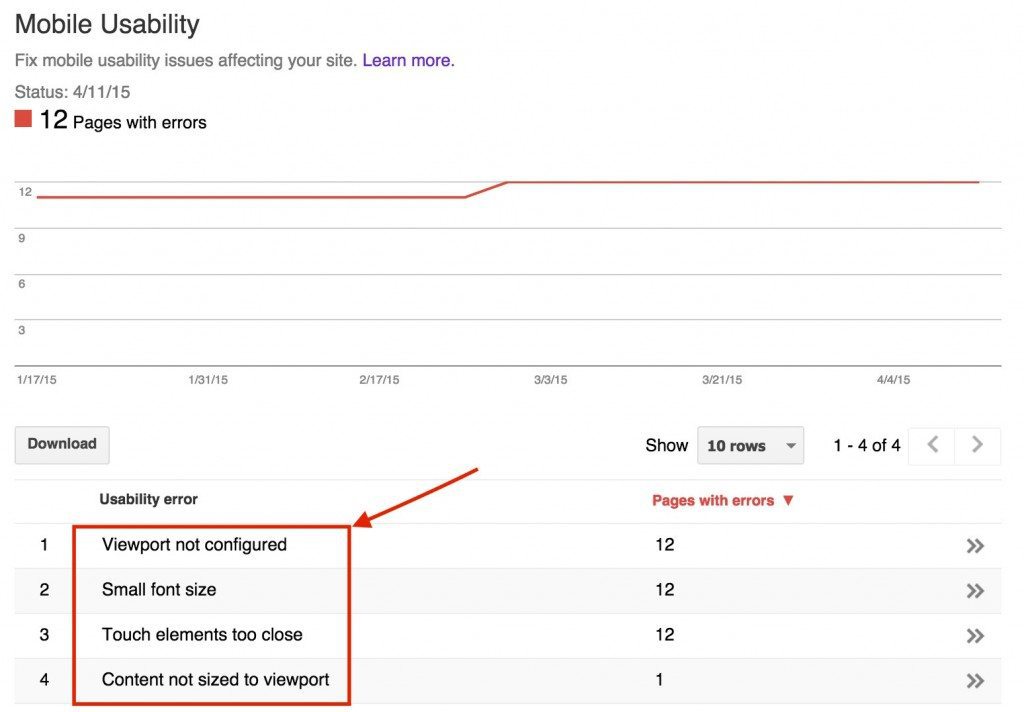3 Steps to Survive Mobilegeddon: The Google Mobile Apocalypse
Have you heard about the "Mobilegeddon" apocalypse that is happening next week? On April 21s, 2015 to be precise. Or, April 22nd if you're here in Australia.
Mobilegeddon. n. A new word that has been invented to strike fear into the hearts of business owners everywhere and have them scrambling to make sure their website is mobile-friendly.
(Maybe the word existed before 2014, but I'd never heard of it. Comment below with a reference if you can find an earlier use!)
Mobilegeddon is the day, April 21st 2015, when Google starts to favour mobile-friendly websites over non-mobile-friendly websites for mobile visitors.
If you're needing to go to the bathroom, or you just want to get back to your day, here's the top 3 things you must do to survive "Mobilegeddon".
(Hint: #3 is the most critical to your business.)
Survival Step 1)
Check your website with Google's mobile usability tool.
The mobile usability tool is a really useful part of Google's Webmaster Tools. It scans your website and checks it for some essential requirements that make your website mobile friendly. Here's a list of the mobile features that the tool checks for.
Survival Step 2)
Review and resolve any issues that the tool detects. Ideally, you'll get the below message if everything checks out ok and your site is already mobile-friendly.
Good news looks like this:

Bad news looks like this:

Although there is really no substitute for testing it on an actual device, there are a number of web-based tools to help you see how your website's looks on mobile devices. Our web team use these tools and others in our web development and testing regime.
- Screenfly by Quirk Tools
- Pagespeed by Google
- GTMetrix
- Google Chrome Developer Tools
If your site has a list of issues, what can you do?
Survival Step 3)
Don't make any rash decisions and rush into a new website build just to fix the mobile issue. You could do more harm than good.
Chances are if you haven't got a mobile-friendly website already, or (gasp) no website at all, then it's likely that your business requires more than just a new mobile-friendly website.
You really need a website that connects your business with your customers and potential customers in a strategic way. You need a website that is built with sales and marketing in mind. You need a website that is built to convert visitors into leads for your business—whether those visitors are on a mobile device or a desktop computer.
Without a strategic approach, just upgrading to a mobile-friendly website isn't going to solve your problems!
So please, don't make a rash decision to fix a symptom (your website is not mobile-friendly) but ignore the underlying disease (a website that's not built to grow your business).
We can review your current online marketing challenges and then help you develop a plan of action that is built in a strategic, outcome-focused way without chasing the "quick fixes" that will make you feel better about your website but won't help your business in the long run.
Now, let's unpack this "Mobilegeddon" apocalypse a little more, if you're interested.
Myth #1: Mobilegeddon Is Going To Break My Website!
Well, no. Your website is going to be safe. As in, it will still work.
But, back in February, Google made it crystal clear that from April 21 it will start favouring mobile-friendly websites in search results that are displayed to mobile devices—smartphones and tablets. So, if your website is not mobile-friendly expect that it will gradually be hidden from anyone looking for your products and services via a mobile device.
Based on our own client's website data alone, we're seeing a minimum of 25-30% of visitors from mobile devices up to as high as 60-75% in some businesses (typically tourism).
Can you afford to have a website that does not cater for half your visitors?
Myth 2: Mobilegeddon Is a Conspiracy to Sell Mobile-Friendly Websites!
I have heard and read this. More than once.
It's along the lines of "web agencies across the world have colluded with Google to force business owners to spend lots of money on their websites in an attempt to create a web empire. Google scratches their back. They scratch Google's back."
Does Google even have a back? 🙂
So, let's unpack the whole "Google's just doing this to make web agencies rich" for just a few seconds.
Why does Google Exist in the First Place?
To help web agencies, designers sell more websites?
To make billions of dollars and pay no tax in Australia?
Wrong. Well, ok. The second one is mostly true...
Google exists to provide the most relevant answer in the quickest, most efficient way to the questions that people ask (type) in that now-ubiquitous search page at www.google.com.
Google collects incredible volumes of data about website users, their search queries, their devices and so on. If they see a clear trend towards the use of mobile devices, then, to look after their users (most of the internet!) they need to ensure that mobile users get the best experience.
So, it's a logical progression that if you as a business owner are not caring enough about mobile users to provide your website in a mobile-friendly format, then Google is going to do it for you.
Harsh, but true!
Does Google care more about your potential website visitor than you do? I can't answer that question. Only you can.
What Can You Do to Prepare Your Business for "Mobilegeddon"?
If you can do just one thing, please don't panic and race out to find the fastest, cheapest mobile-friendly website in a rushed effort to "get my website fixed before April 21st or the universe will implode".
Our team builds fast, user-friendly and mobile responsive tourism websites that adapt to all screen sizes. Like this responsive website designed for Adventure Bay Charters.

How Can Woof Media Help Your Business Survive the Mobilegeddon Apocalypse?
We offer a digital marketing audit to help you analyse the performance of your online marketing now in the context of what you're trying to achieve as a business.

